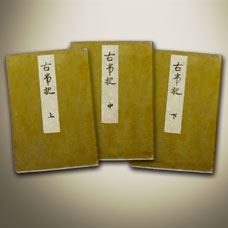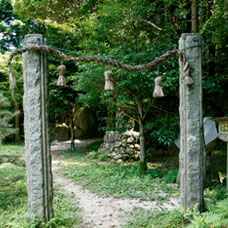The Kojiki
What is The Kojiki?
2012 marks the 1300th anniversary of the compilation of The Kojiki (Record of Ancient Matters). Completed in the year 712, The Kojiki is the oldest existing record of Japanese history, and is a text that is vital to any discussion of ancient Japanese history.
Even if it were merely a historical record, the value of The Kojiki is unquestionable, as it also is a collection of a large amount of Japanese mythology. The Kojiki begins during the period known as Kamiyo (The Age of the Gods), starting with the Japanese creation myth. Other myths include: Izanagi and Izanami’s creation of the islands of Japan and the myriad deities that populated the heavens and this world, Izanagi’s journey to Yomi-no-kuni (the Underworld) in an attempt to bring back Izanami after her death, Susano-o’s battle against the eight-headed eight-tailed serpent Yamata-no-Orochi, the adventures of Okuninushi as he rose to become the deity charged with turning the land of Japan into a true nation, and the descent of Ninigi (grandson of the sun deity Amaterasu), who came from the heavens to rule Japan. These myths share similarities with mythology from around the world, particularly well-known tales from Greek mythology, and this provides an added layer of interest to them.
The exploits of the gods included in The Kojiki lead to a record of the lineage of the Imperial Family up to Empress Suiko (593 – 628 AD), and events that happened during each emperor’s reign. In doing this, The Kojiki traces a path from mythology into historical record, and while it is difficult to say at which point the stories pass from myth and legend into historical fact, this blend of stories gives the reader many different windows into Japanese history and culture.

The Kojiki is divided into three books, and the stories of the gods are all recorded in the first book.

The entrance to the Underworld, which can still be visited today.













